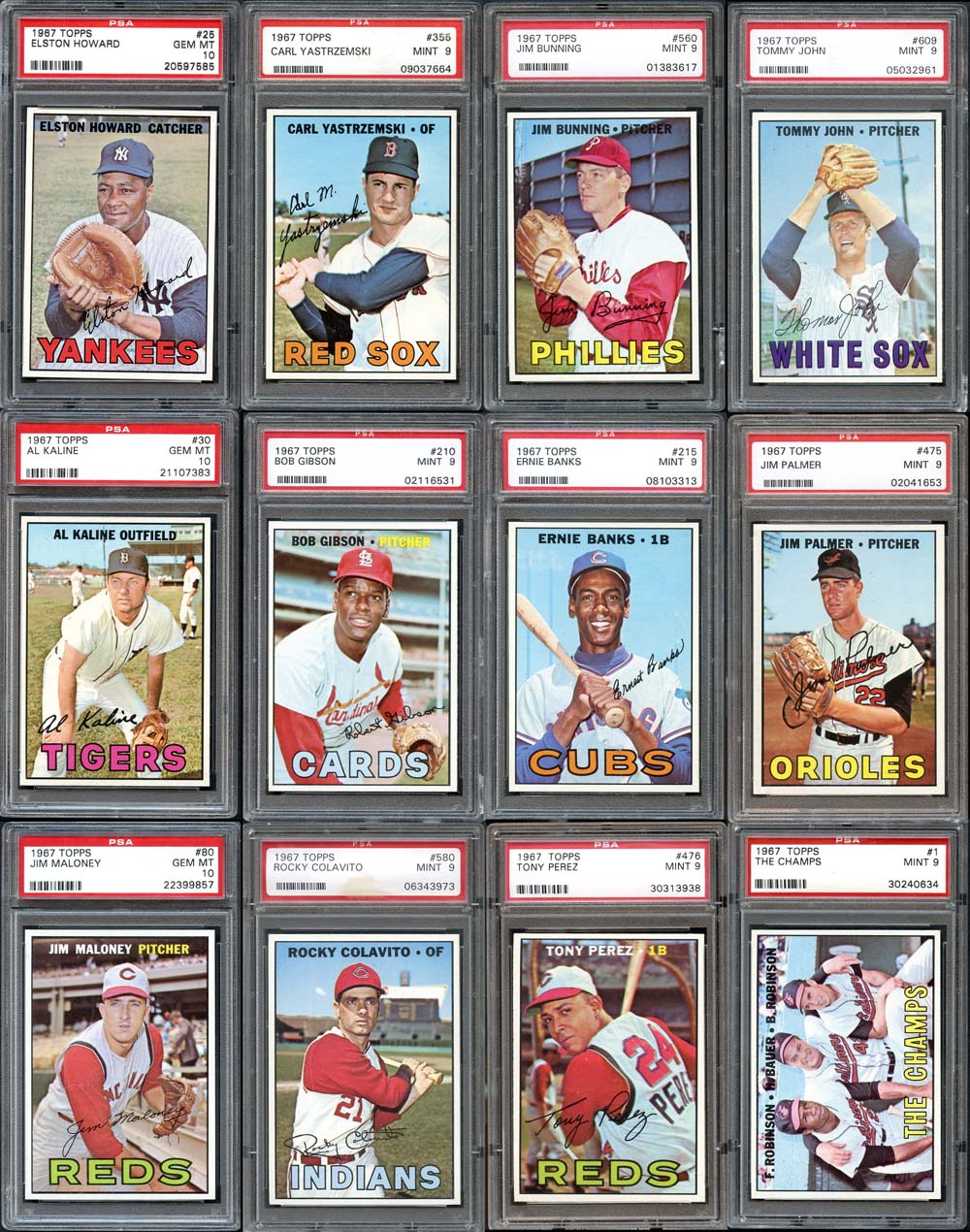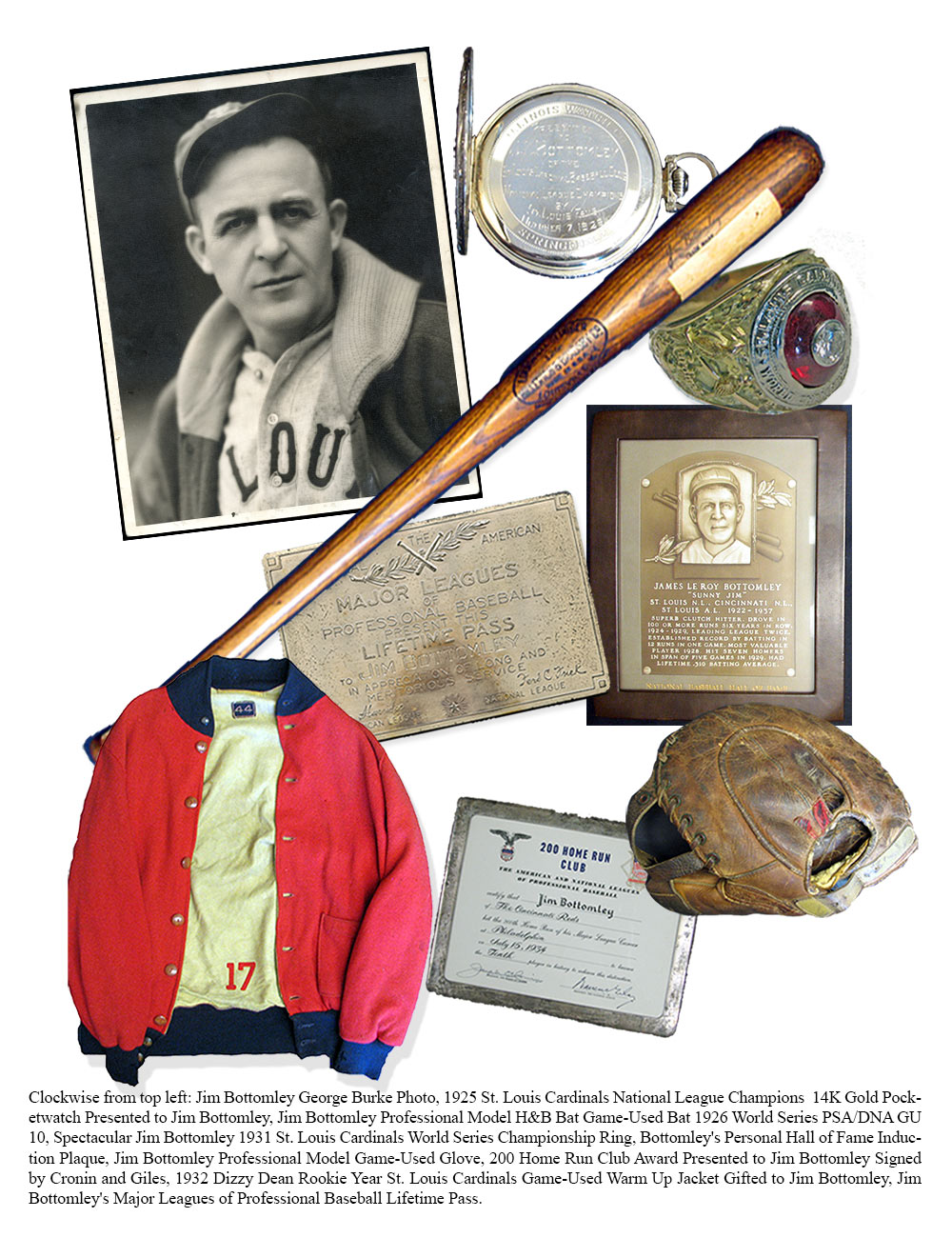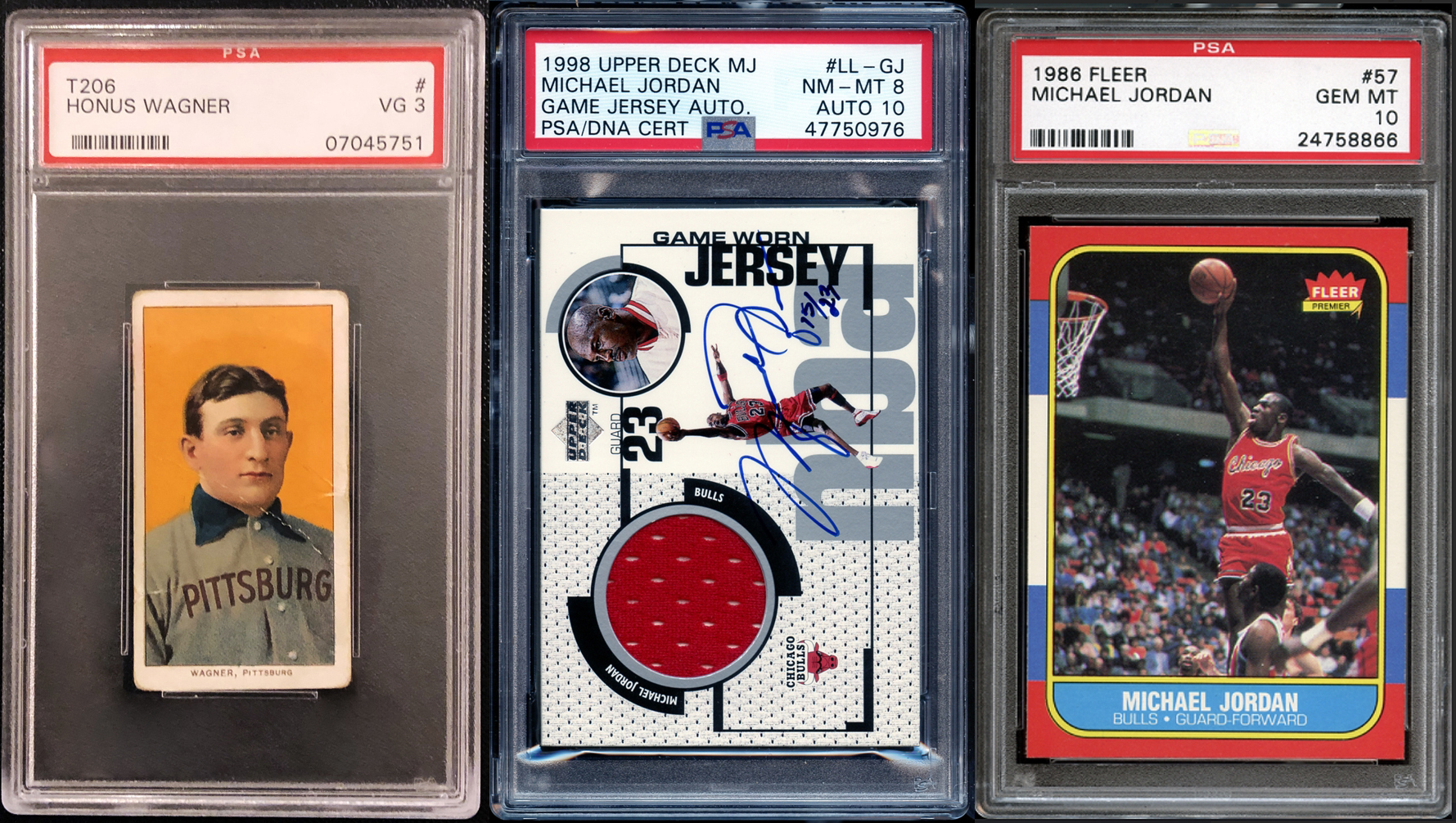
Sorry to get all “Tale of Two Cities” on you there but it seems like a lifetime ago that the NBA announced that Rudy Gobert had tested positive for COVID-19 and some NBA games would have to be cancelled. Then in an instant, the entire NBA was gone. And then the NHL. And there goes NASCAR, and the PGA, and the Kentucky Derby. Suddenly, the DraftKings app was only good for wagering on Russian table tennis in the Moscow Ligo Pro, with fistfights breaking out between fans of Alexandr Serebrennikov and Dmitry Petrochenko. OK, that last part might not be accurate, but yeah, 2020 was a different kind of year. In retrospect though, it wasn’t all bad. No seriously, it wasn’t.
Lockdown, Market Up!
On March 25th, MHCC President and CEO Brian Drent called the staff into the office and informed us that a stay at home order was going into effect and that we’d be working remotely until further notice. We were joining the legions of working refugees stuck at home, trying to figure out how to schedule a Zoom meeting. We discussed our immediate futures and wondered what was to become of our industry. With economic uncertainty on the horizon, we figured that the demand for pricey sports cards would take a back seat to more immediate needs, like paper towels and toilet paper. At least, that’s what we thought. It’s what everyone thought. Trying to be optimistic, we decided, “Hey, maybe collectors will get bored sitting at home without sporting events and spark a greater demand for sports cards.” Yeah, we didn’t believe it either, but lo and behold, it wasn’t long before price records were dropping faster than disposal facemasks. The Michael Jordan documentary “The Last Dance” hit the airwaves, and for many people, it was a quick fix for fans suffering sports withdrawal. MJ rookie cards went through the roof, with his 1986 Fleer rookie card graded PSA 9 jumping from $7,800 in February to $18,000 in November, and PSA 10 GEM MINT examples reaching $125,000, a 400% increase from the start of the year. And it wasn’t just Jordan cards, as Lew Alcindor’s 1969 Topps RC, for example, went from $6,500 in PSA 8 in January to over $35,000 in August. Almost 4 MILLION dollars for a Mike Trout rookie card? Across the board; from vintage to modern and covering all sports, card prices were tripling, quadrupling, and more. It even brought out the big guns of the hobby…
Need a T206 Honus Wagner? Take Your Pick!
The creation of sports cards started some 150 years ago and no matter what you collect, the fact is that the T206 Honus Wagner card will stand as the pinnacle of the hobby. It’s not the rarest card, it’s not the most attractive card, and as recent events have shown, it’s not even the most expensive card. But it is the king, and until this year, you rarely saw one up for sale. The collecting frenzy of 2020 brought some of those big boys out from storage and Mile High Card Company was at the forefront. It actually started last October with a PSA 2 selling for $1.326M, almost doubling the current record price. But MHCC sold two more of the prized pasteboards in 2020, a PSA 1 that fetched a world-record price of $1.146M, which has since been topped with a November sale of $1.392M, and a PSA 3 that was sold privately for $3.25M, the highest price ever paid for a T206 Wagner.
There’s no telling what the future holds for the hobby, but what was appearing to be the demise of the industry has instead become the greatest bull market ever. If you’re a buyer, there’s never been more opportunity, and if you’re a seller, there’s never been better prices. Like all goods things, it will eventually come to an end. So let me end this with the same choice words that have never rang more true than they do right now: if you desire the maximum possible return for your prized sports cards and/or memorabilia, please call our office at (303) 840-2784 to speak with one of MHCC’s team of experts or visit www.milehighcardco.com and consign to the Spring 2021 auction.

 With the upcoming trade of perennial All-Star Anthony Davis to the Lakers for Lonzo Ball, Josh Hart, Brandon Ingram and three first-round picks (one of which is the #4 pick in this year’s draft), it appears the Lakers are going all-in to build what has become known as the “super team.” Clearly the Lakers are not done yet, with names like Kyrie Irving and Kahwi Leonard being bandied about as the third piece in forming a superstar trio. As is the case with the AD trade, it involves mortgaging the future for the chance to own the present, but is it worth the risk? Like other sports, perhaps even more so, basketball isn’t necessarily about the excellence of the five individuals on the court but the chemistry they create in working together as a unit. A group of superstars playing together could result in a conflict of egos, each having a different vision about how the offense should flow (most undoubtedly preferring themselves as the focal point). It’s counter intuitive for stars who have been the primary option of their respective teams to join with similar stars to form a cohesive bond, with some (or all) yielding the lead role for the betterment of the unit. It’s an experiment that has resulted in great successes and epic failures. Here are some of the best, and worst, super teams of the 21st century:
With the upcoming trade of perennial All-Star Anthony Davis to the Lakers for Lonzo Ball, Josh Hart, Brandon Ingram and three first-round picks (one of which is the #4 pick in this year’s draft), it appears the Lakers are going all-in to build what has become known as the “super team.” Clearly the Lakers are not done yet, with names like Kyrie Irving and Kahwi Leonard being bandied about as the third piece in forming a superstar trio. As is the case with the AD trade, it involves mortgaging the future for the chance to own the present, but is it worth the risk? Like other sports, perhaps even more so, basketball isn’t necessarily about the excellence of the five individuals on the court but the chemistry they create in working together as a unit. A group of superstars playing together could result in a conflict of egos, each having a different vision about how the offense should flow (most undoubtedly preferring themselves as the focal point). It’s counter intuitive for stars who have been the primary option of their respective teams to join with similar stars to form a cohesive bond, with some (or all) yielding the lead role for the betterment of the unit. It’s an experiment that has resulted in great successes and epic failures. Here are some of the best, and worst, super teams of the 21st century: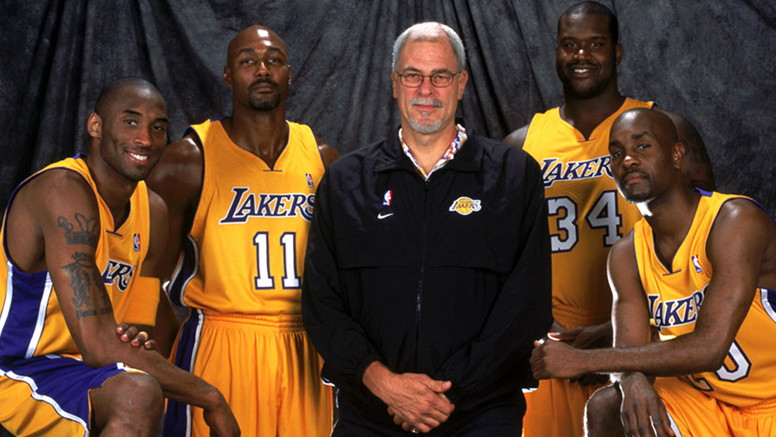 One of the earliest attempts at a super team, the 2003-04 Los Angeles Lakers had the greatest starting lineup in NBA history, on paper that is. Take the championship duo of Shaquille O’Neal and Kobe Bryant, then add in two more lock Hall of Famers in Gary Payton and Karl Malone to work under legendary coach Phil Jackson. Sound like a team that can’t lose, right? Well, not so much. The Lakers finished the regular season just six games better than the previous year and with the fourth best record, then were crushed by the Detroit Pistons in five-games for the NBA championship. Shaq and Kobe each saw their scoring average dip six points per game while Malone and Payton, both aging legends pining to finally earn the championship ring that had eluded them, were no more than glorified role players. The following year, Payton moved on to Boston and Malone retired. The super team that couldn’t lose …. did.
One of the earliest attempts at a super team, the 2003-04 Los Angeles Lakers had the greatest starting lineup in NBA history, on paper that is. Take the championship duo of Shaquille O’Neal and Kobe Bryant, then add in two more lock Hall of Famers in Gary Payton and Karl Malone to work under legendary coach Phil Jackson. Sound like a team that can’t lose, right? Well, not so much. The Lakers finished the regular season just six games better than the previous year and with the fourth best record, then were crushed by the Detroit Pistons in five-games for the NBA championship. Shaq and Kobe each saw their scoring average dip six points per game while Malone and Payton, both aging legends pining to finally earn the championship ring that had eluded them, were no more than glorified role players. The following year, Payton moved on to Boston and Malone retired. The super team that couldn’t lose …. did. While the Lakers experiment came up short, the Celtics believed a “super team” could work with the right mix of stars. They already had themselves a solid scorer in Paul Pierce, but without the firepower around him, were a losing franchise. Boston made some bold moves in the 2007 offseason, with Kevin Garnett coming over from Minnesota to bolster the inside game and sharp shooter Ray Allen providing the deep threat to complete a new big three. Adding in a strong bench that included playoff tested Sam Cassell and PJ Brown, along with a rising star in Rajon Rondo, the Celtics jumped from 24 wins the previous year to a league-best 66-16 and captured their first NBA title since the Larry Bird era.
While the Lakers experiment came up short, the Celtics believed a “super team” could work with the right mix of stars. They already had themselves a solid scorer in Paul Pierce, but without the firepower around him, were a losing franchise. Boston made some bold moves in the 2007 offseason, with Kevin Garnett coming over from Minnesota to bolster the inside game and sharp shooter Ray Allen providing the deep threat to complete a new big three. Adding in a strong bench that included playoff tested Sam Cassell and PJ Brown, along with a rising star in Rajon Rondo, the Celtics jumped from 24 wins the previous year to a league-best 66-16 and captured their first NBA title since the Larry Bird era.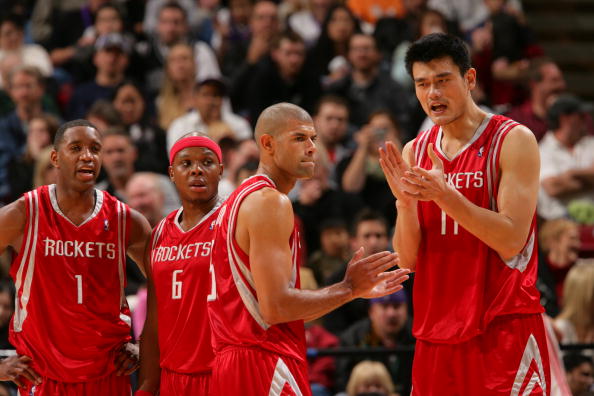 Same season, different result. The Celtics found the right trio to catapult them from also-rans to champions, but the Rockets … ummm, no. Building a nucleus of experience and youth, the Rockets offered a “super team” with Tracy McGrady in the prime of his career, Yao Ming as a rising star, and Steve Francis, who had come back to Houston after dominating for the Rockets from 1999-2004. Expected to challenge the Celtics in the NBA Finals, Francis turned out to be just a shell of his former all-star self and played in only 10 games before having season-ending surgery while McGrady and Ming each saw their scoring average drop three points and the Rockets were eliminated in the first round of the playoffs.
Same season, different result. The Celtics found the right trio to catapult them from also-rans to champions, but the Rockets … ummm, no. Building a nucleus of experience and youth, the Rockets offered a “super team” with Tracy McGrady in the prime of his career, Yao Ming as a rising star, and Steve Francis, who had come back to Houston after dominating for the Rockets from 1999-2004. Expected to challenge the Celtics in the NBA Finals, Francis turned out to be just a shell of his former all-star self and played in only 10 games before having season-ending surgery while McGrady and Ming each saw their scoring average drop three points and the Rockets were eliminated in the first round of the playoffs.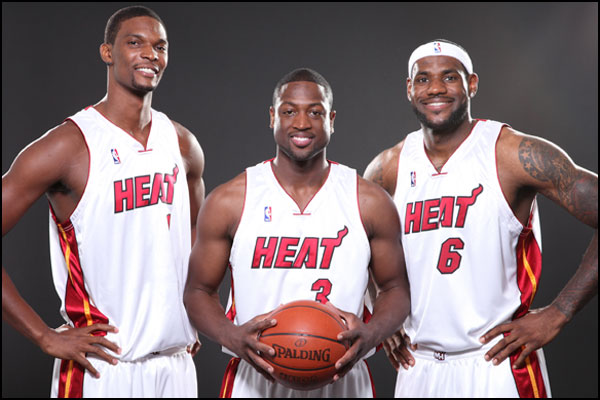 Credit Pat Riley for perpetrating the greatest coup in NBA history. Organizing his teams finances over several seasons for the express purpose of making a splash in this particular free agency period, Riley blinded LeBron James and Chris Bosh with his championship rings and convinced them to join Dwyane Wade and take their talents to South Beach. Many thought the Heat would suffer the same fate as the 2003-04 Lakers; too many egos, not enough basketballs to go around, and it took time for them to get it figured out. But eventually the trio learned to co-exist on the court. The Heat fell to the Mavericks in the NBA finals in the trio’s first attempt, but Riley added bench depth to the squad that resulted in back to back championships. Over the four years the trio played together, they compiled a 224-88 regular season record with two NBA titles while making it to the NBA finals each year.
Credit Pat Riley for perpetrating the greatest coup in NBA history. Organizing his teams finances over several seasons for the express purpose of making a splash in this particular free agency period, Riley blinded LeBron James and Chris Bosh with his championship rings and convinced them to join Dwyane Wade and take their talents to South Beach. Many thought the Heat would suffer the same fate as the 2003-04 Lakers; too many egos, not enough basketballs to go around, and it took time for them to get it figured out. But eventually the trio learned to co-exist on the court. The Heat fell to the Mavericks in the NBA finals in the trio’s first attempt, but Riley added bench depth to the squad that resulted in back to back championships. Over the four years the trio played together, they compiled a 224-88 regular season record with two NBA titles while making it to the NBA finals each year. Five years and five NBA Finals appearances; that says it all. “King James” was back in Cleveland doing his thing but Steph Curry had passed him up as the game’s most influential talent. His offensive outbursts, dropping three-pointers at an alarming rate and from virtually anywhere on the court, changed the landscape of NBA offenses and was pivotal to the rise of the Warriors as a super team. With a nucleus of Curry, Klay Thompson and Draymond Green, you couldn’t consider Golden State a super team; that is until “The Slim Reaper” came to town. With Kevin Durant in the house, the Warriors have posted a 182-64 regular season record with two NBA Championships in three years … and counting.
Five years and five NBA Finals appearances; that says it all. “King James” was back in Cleveland doing his thing but Steph Curry had passed him up as the game’s most influential talent. His offensive outbursts, dropping three-pointers at an alarming rate and from virtually anywhere on the court, changed the landscape of NBA offenses and was pivotal to the rise of the Warriors as a super team. With a nucleus of Curry, Klay Thompson and Draymond Green, you couldn’t consider Golden State a super team; that is until “The Slim Reaper” came to town. With Kevin Durant in the house, the Warriors have posted a 182-64 regular season record with two NBA Championships in three years … and counting.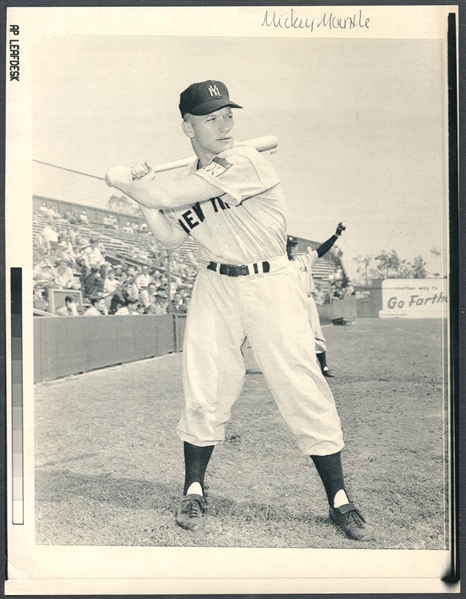 As I said, it’s difficult to entertain a comparison of any modern day ballplayer to Mickey Mantle, and I imagine to the majority of Yankees fans, them’s fightin’ words! He’s so beloved to collectors that anything Mantle related immediately moves to the head of the class. But OK, let’s put that on the back burner and talk accomplishments, and to be fair we’ll toss out the partial stats of his rookie year and stick to the first 7 full seasons of his career, same amount of time Trout has been in the league. While Mantle’s first three seasons were solid, he really didn’t have the breakout year worthy of being named Joe DiMaggio’s heir apparent until 1955, when he led the American league in triples (11), homers (37), walks (113) and slugging percentage (.611). And of course, Mantle has the 1956 Triple Crown season under his belt (52 homers, 130 RBI, .353 batting average and an AL MVP award). I haven’t even looked at Trout’s accomplishments yet but I’m pretty confident he can’t match that. Mantle followed up that season with another AL MVP performance, posting 34 homers and batting .365 while walking a league-leading 146 times for a gaudy .512 on-base percentage, second to Ted Williams in large part due to “Teddy Ballgame’s” .388 batting average (no shame there). In the final year of our seven season comparison, Mantle once again took the home run crown with 42 round-trippers and topped the league with 129 walks while batting .304. In all,, Mantle smacked 234 dingers, batted .319, stole 69 bases, led the league in homers three times, runs scored four times, triples once, RBI once and won an AL batting title and two AL MVP Awards.
As I said, it’s difficult to entertain a comparison of any modern day ballplayer to Mickey Mantle, and I imagine to the majority of Yankees fans, them’s fightin’ words! He’s so beloved to collectors that anything Mantle related immediately moves to the head of the class. But OK, let’s put that on the back burner and talk accomplishments, and to be fair we’ll toss out the partial stats of his rookie year and stick to the first 7 full seasons of his career, same amount of time Trout has been in the league. While Mantle’s first three seasons were solid, he really didn’t have the breakout year worthy of being named Joe DiMaggio’s heir apparent until 1955, when he led the American league in triples (11), homers (37), walks (113) and slugging percentage (.611). And of course, Mantle has the 1956 Triple Crown season under his belt (52 homers, 130 RBI, .353 batting average and an AL MVP award). I haven’t even looked at Trout’s accomplishments yet but I’m pretty confident he can’t match that. Mantle followed up that season with another AL MVP performance, posting 34 homers and batting .365 while walking a league-leading 146 times for a gaudy .512 on-base percentage, second to Ted Williams in large part due to “Teddy Ballgame’s” .388 batting average (no shame there). In the final year of our seven season comparison, Mantle once again took the home run crown with 42 round-trippers and topped the league with 129 walks while batting .304. In all,, Mantle smacked 234 dingers, batted .319, stole 69 bases, led the league in homers three times, runs scored four times, triples once, RBI once and won an AL batting title and two AL MVP Awards. While Mantle was “the next in line after Ruth, Gehrig and DiMaggio” to lead the decades long Yankees dynasty, Mike Trout received no such fanfare.There were 24 players selected ahead of him in the 2009 MLB draft, six of which never spent a second on a big league diamond. Merely being mentioned in the same sentence with Mickey Mantle is already an amazing feat, but let’s be fair and put “The Commerce Comet” on the bench, it’s Trout time! In his first full season with the Angels, Trout won Rookie of the Year honors and finished 2nd in AL MVP voting with 30 homers, a .326 batting average, a league leading 49 stolen bases and 129 runs scored. Following a 27 homer, 33 stolen base and .323 batting average performance the next year that left him runner-up in the voting once again, Trout took the AL MVP crown in 2014 off of 36 homers with a league-leading 111 RBI and 115 runs scored, and a .287 average. He followed that up with a 40+ homer season, mashing 41 taters while batting .299 and leading the league in slugging percentage. Another MVP season in 2016 with 29 homers, 100 RBI, and league leader in walks (116) and runs scored (123) was followed by campaigns of 33 and 39 home runs respectively, thriving above the .300 mark all three seasons (.315, .306 and .312). Trout’s 7-year total: 235 home runs, .310 batting average, stole 185 bases, led the league in runs score four times, RBI once, stolen bases once, walks three times, and won two AL MVP Awards.
While Mantle was “the next in line after Ruth, Gehrig and DiMaggio” to lead the decades long Yankees dynasty, Mike Trout received no such fanfare.There were 24 players selected ahead of him in the 2009 MLB draft, six of which never spent a second on a big league diamond. Merely being mentioned in the same sentence with Mickey Mantle is already an amazing feat, but let’s be fair and put “The Commerce Comet” on the bench, it’s Trout time! In his first full season with the Angels, Trout won Rookie of the Year honors and finished 2nd in AL MVP voting with 30 homers, a .326 batting average, a league leading 49 stolen bases and 129 runs scored. Following a 27 homer, 33 stolen base and .323 batting average performance the next year that left him runner-up in the voting once again, Trout took the AL MVP crown in 2014 off of 36 homers with a league-leading 111 RBI and 115 runs scored, and a .287 average. He followed that up with a 40+ homer season, mashing 41 taters while batting .299 and leading the league in slugging percentage. Another MVP season in 2016 with 29 homers, 100 RBI, and league leader in walks (116) and runs scored (123) was followed by campaigns of 33 and 39 home runs respectively, thriving above the .300 mark all three seasons (.315, .306 and .312). Trout’s 7-year total: 235 home runs, .310 batting average, stole 185 bases, led the league in runs score four times, RBI once, stolen bases once, walks three times, and won two AL MVP Awards.





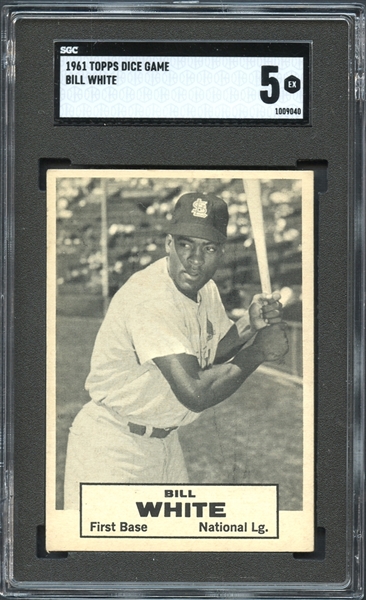 Never heard of it? That’s OK. Like Bigfoot or the Loch Ness monster, cards from the 1961 Topps Dice Game test series are considered more urban legend than reality with the number of known specimens from the entire series coming in lower than that of the iconic T206 Honus Wagner card. In fact, the known population of each card can be counted on one hand. Most of what is known about this set is speculation, but it seems that having defeated the Bowman company for baseball card supremacy, Topps considered dabbling in a market that was dominated by the American Professional Baseball Association (APBA) and Strat-O-Matic board games introduced in the 1950s, producing an independent game which included black and white baseball cards reminiscent in design to cards produced by Leaf in 1960. Unlike the baseball card sets from 1952 to that point, this collection of 18 cards was to be sold as a set with a pair of dice and together were used to play a simulated baseball game. The reverse of each card is filled with numbers and baseball plays, outcomes determined when the card holder “called a pitch” and then rolled the dice. However, the concept didn’t get past the initial stage of development and the cards are so rudimentary that they don’t even have any trademark or copyright information to identify them as a Topps product. Some of the information on the reverse, specifically those related to baserunning, are crudely printed from handwritten originals, confirming how early in the process this test series was. It’s very possible that just a few complete sets were made so that test subjects could try playing the game to see if it was a marketable product. Some of these cards escaped the Topps factory from the files of Woody Gellman, an editor and art director at Topps for over 25 years. Examples have surfaced with staple holes, which could have been one or more of each in the set that was attached to a file card and locked away in the archives.
Never heard of it? That’s OK. Like Bigfoot or the Loch Ness monster, cards from the 1961 Topps Dice Game test series are considered more urban legend than reality with the number of known specimens from the entire series coming in lower than that of the iconic T206 Honus Wagner card. In fact, the known population of each card can be counted on one hand. Most of what is known about this set is speculation, but it seems that having defeated the Bowman company for baseball card supremacy, Topps considered dabbling in a market that was dominated by the American Professional Baseball Association (APBA) and Strat-O-Matic board games introduced in the 1950s, producing an independent game which included black and white baseball cards reminiscent in design to cards produced by Leaf in 1960. Unlike the baseball card sets from 1952 to that point, this collection of 18 cards was to be sold as a set with a pair of dice and together were used to play a simulated baseball game. The reverse of each card is filled with numbers and baseball plays, outcomes determined when the card holder “called a pitch” and then rolled the dice. However, the concept didn’t get past the initial stage of development and the cards are so rudimentary that they don’t even have any trademark or copyright information to identify them as a Topps product. Some of the information on the reverse, specifically those related to baserunning, are crudely printed from handwritten originals, confirming how early in the process this test series was. It’s very possible that just a few complete sets were made so that test subjects could try playing the game to see if it was a marketable product. Some of these cards escaped the Topps factory from the files of Woody Gellman, an editor and art director at Topps for over 25 years. Examples have surfaced with staple holes, which could have been one or more of each in the set that was attached to a file card and locked away in the archives. 
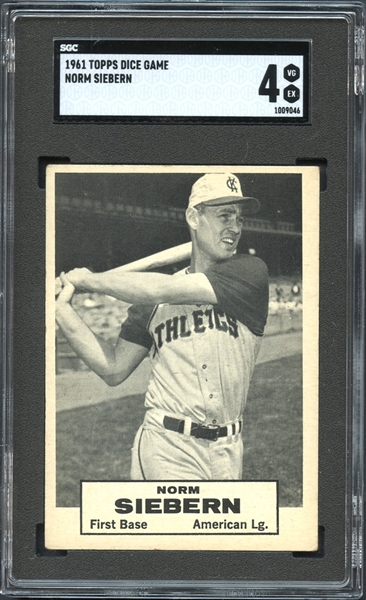
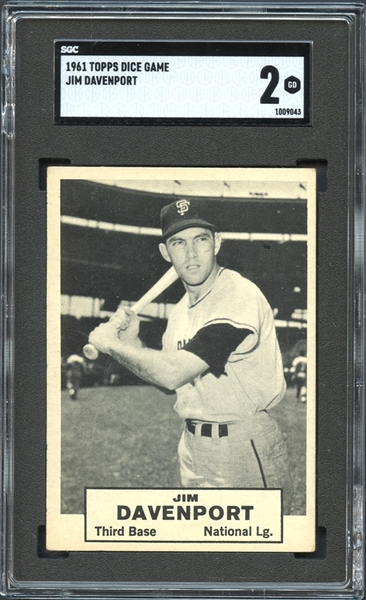
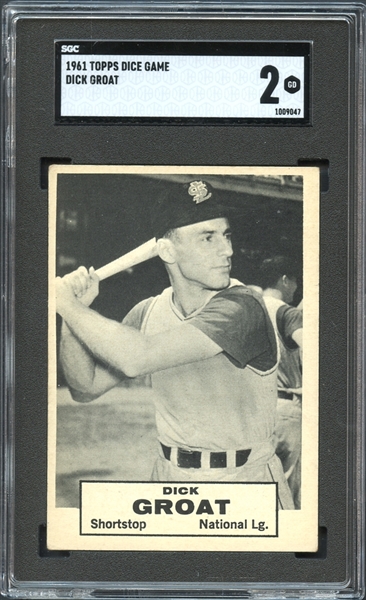
 Now I consider myself a fairly knowledgeable person when it comes to classic rock, but as it is often said, you learn something new every day. A large portion of the collection centered around the
Now I consider myself a fairly knowledgeable person when it comes to classic rock, but as it is often said, you learn something new every day. A large portion of the collection centered around the  Garcia was an artist as well as a musician, having attended art school as a child. Although his focus was obviously on his music career, he continued to sketch and paint, and he made it a practice not to sign his lithographic prints until they sold at gallery. I had the privilege of examining and photographing over 30 of his signed prints for the upcoming auction, and I found them to be quite fascinating! My favorite is probably
Garcia was an artist as well as a musician, having attended art school as a child. Although his focus was obviously on his music career, he continued to sketch and paint, and he made it a practice not to sign his lithographic prints until they sold at gallery. I had the privilege of examining and photographing over 30 of his signed prints for the upcoming auction, and I found them to be quite fascinating! My favorite is probably  But I’d have to say the crown jewel, or jewels, of this collection is a pair of items signed by all four members of the Beatles! One is a
But I’d have to say the crown jewel, or jewels, of this collection is a pair of items signed by all four members of the Beatles! One is a 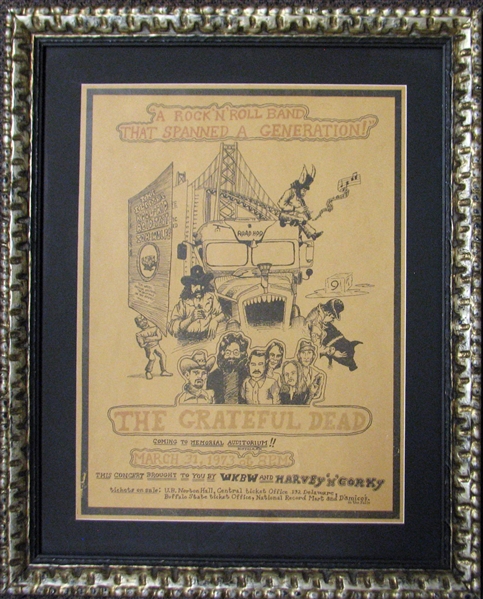

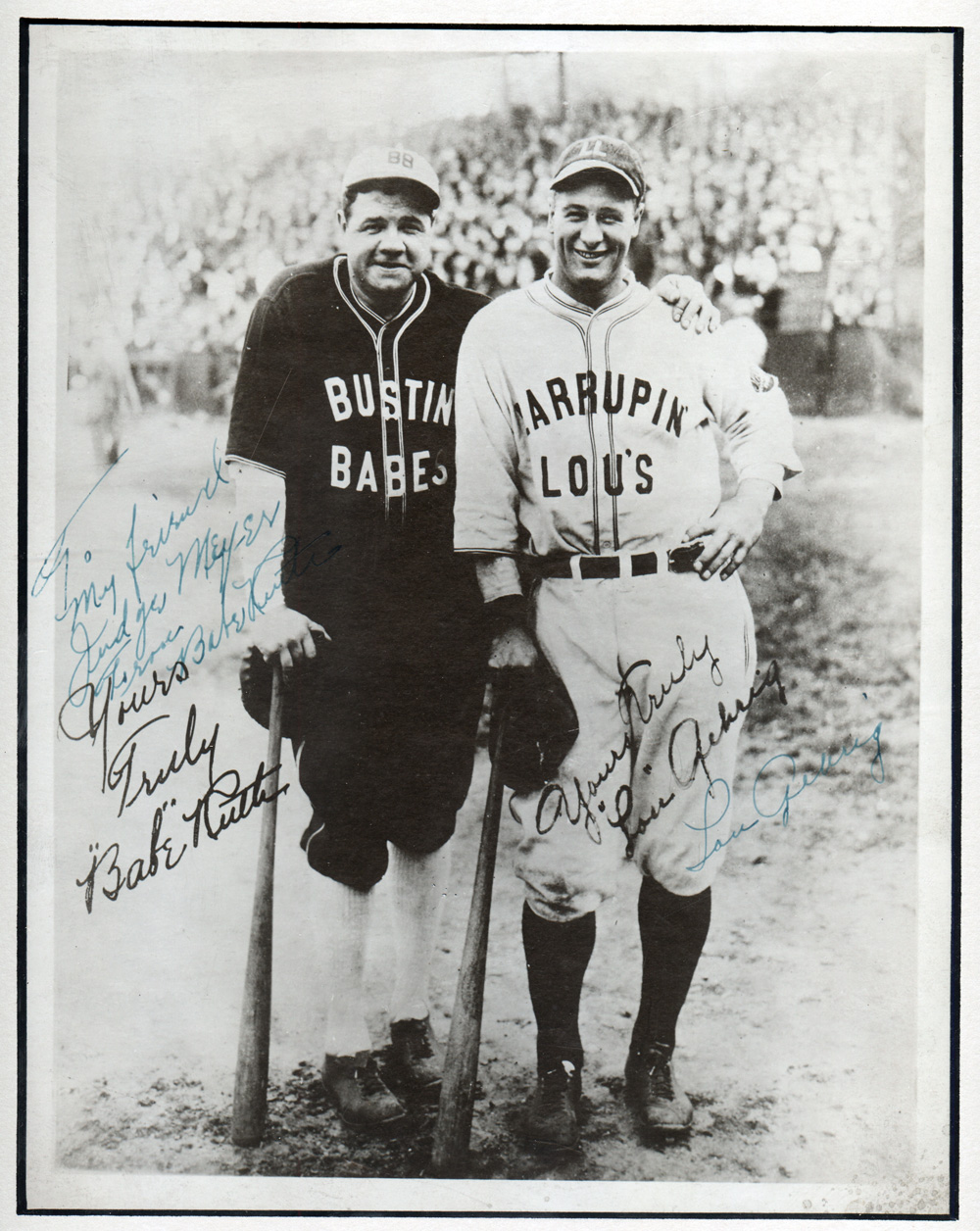 In an age when Giancarlo Stanton gets a 13-year, $325 million contract and Bryce Harper decides a 10-year agreement at $30 million per year isn’t enough, one has to wonder what teams would pay in today’s dollars to acquire the services of a Babe Ruth or Lou Gehrig. Would they be worth $40 million a year? Maybe $50 million? Long before the days of mega-sponsors and television revenues, baseball players (even the really good ones) didn’t make the kind of generational wealth that they do today. In fact, many took off-season jobs to supplement their income. In 1927, fresh off of a record-setting 60 home run season, Babe Ruth was paid an “audacious” sum of $70,000 per year, almost as much as the President of the United States at the time. But in today’s currency, that amounts to about a million dollars a year. Considering the league average in 2018 was just north of $4 million per year, the greatest player in baseball history at his peak was receiving the salary of a marginal major-leaguer in the present. That’s where “barnstorming” came in.
In an age when Giancarlo Stanton gets a 13-year, $325 million contract and Bryce Harper decides a 10-year agreement at $30 million per year isn’t enough, one has to wonder what teams would pay in today’s dollars to acquire the services of a Babe Ruth or Lou Gehrig. Would they be worth $40 million a year? Maybe $50 million? Long before the days of mega-sponsors and television revenues, baseball players (even the really good ones) didn’t make the kind of generational wealth that they do today. In fact, many took off-season jobs to supplement their income. In 1927, fresh off of a record-setting 60 home run season, Babe Ruth was paid an “audacious” sum of $70,000 per year, almost as much as the President of the United States at the time. But in today’s currency, that amounts to about a million dollars a year. Considering the league average in 2018 was just north of $4 million per year, the greatest player in baseball history at his peak was receiving the salary of a marginal major-leaguer in the present. That’s where “barnstorming” came in.